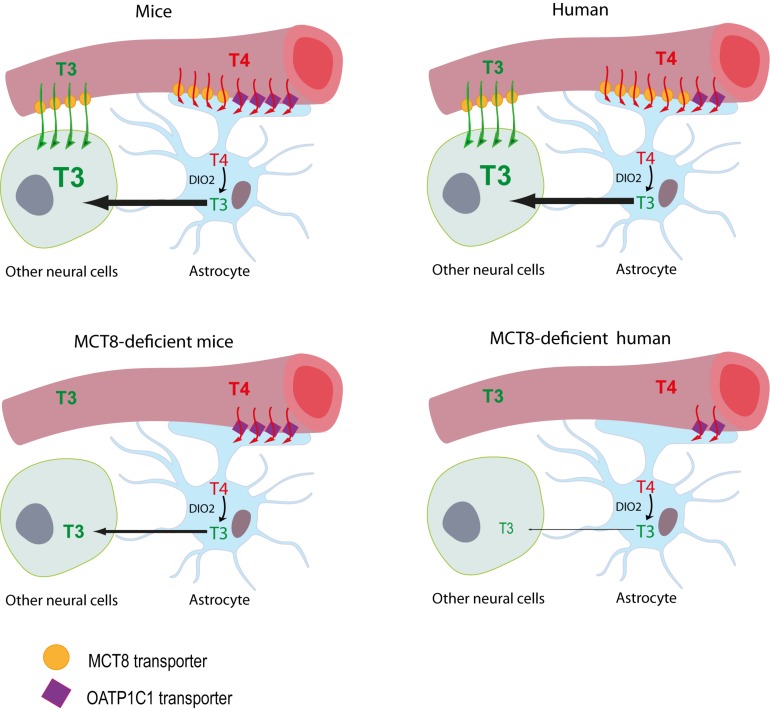FIGURE 1.
Proposed model illustrating the differences between MCT8-deficient mice and humans in thyroid hormone availability to neural cells. The model for T3 availability to the brain under normal conditions supports that brain T3 can access the target neural cells though two different routes: (1) directly from the circulation, with T3 crossing the BBB mainly via the MCT8 transporter into the extracellular fluid where it directly reaches the target neural cells, or (2) T3 can also be produced locally by DIO2 activity in the astrocytes from T4, which crosses the BBB directly into the astrocytes mainly through MCT8 in humans and through MCT8 and OATP1C1 in mice. In MCT8-deficient mice, the elevated DIO2 activity in the astrocytes converts the T4 available through OATP1C1 into T3, that is subsequently available to target neural cells, compensating for the lack of MCT8. In MCT8-deficient humans, this compensatory mechanism cannot take place as OATP1C1 is hardly present in the human BBB, preventing T4 entry to the brain and its subsequent conversion into T3.

